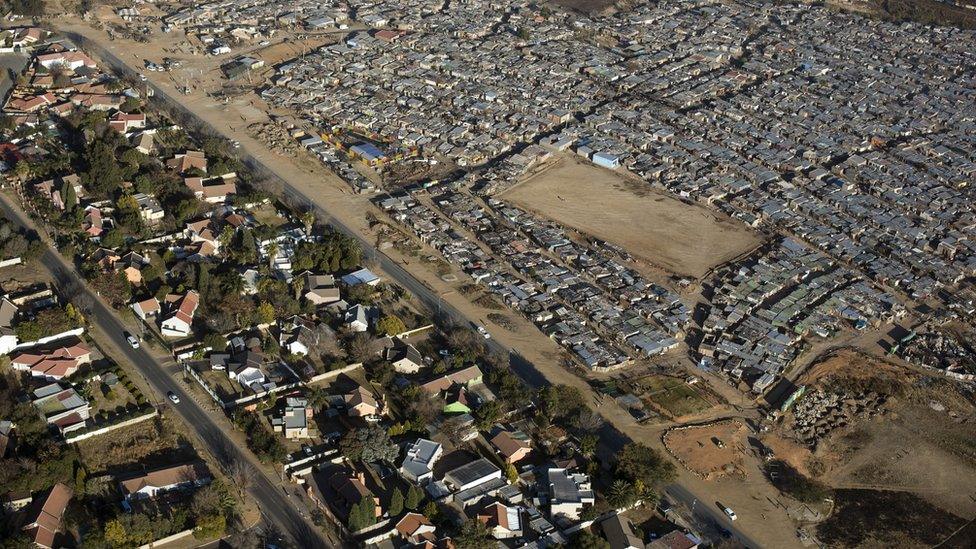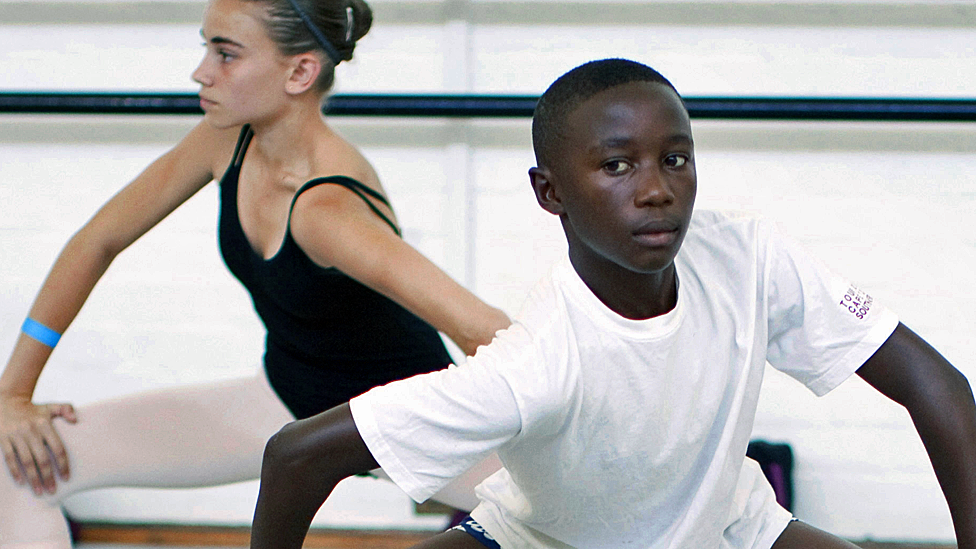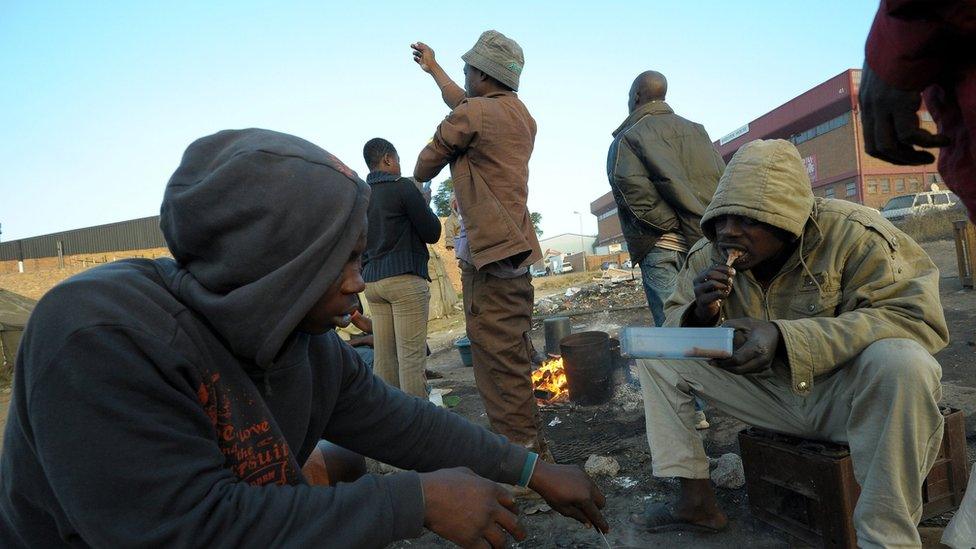South Africa elections: Has the ANC built enough homes?
- Published

Many South Africans still live in informal settlements
When the ANC came to power in South Africa, in 1994, the country faced a stark housing crisis.
Large parts of the black population lived in inadequate, overcrowded and informal settlements.
An ambitious house-building programme has been central to ANC policy since then.
During the election campaign in 2014, the ANC promised to deliver one million homes in the next five years.
So what happened and how good is its record?
How many houses has the ANC built?
The South African government says 3.2 million homes were built from 1994 to 2018.
There was a dramatic growth in construction in the early years of ANC rule (1994-1999).
But after reaching a peak in 1999, the rate of house-building has slowed, particularly over the past few years.

Just under 580,000 homes were delivered during the first four years of the ANC's current term, 2015-18.
And although data for the fifth year is not yet available, this rate of delivery falls considerably short of the promise made by the ANC at the last election.
Urgent need
The South African government estimates a current national shortfall of 2.1 million homes - for about 12.5 million people.
And it has set a target of 2030 to fill that gap.
But independent think-tank the Centre for Affordable Housing Finance in Africa (CAHF) says the backlog is massive "and annual delivery by government is clearly insufficient to meet demand".
And at the current delivery rate - 136,000 homes per year - only 1.5 million of the 2.1 million currently needed would be available by 2030.
In the meantime, the population is growing.

An aerial view of a poor squatter neighbourhood next to a rich one in Johannesburg
How do South Africans live?
Most South Africans live in formal dwellings - 80%, according to the latest statistics, in 2017.
A further 14% live in informal housing, which are mostly squatter settlements on the periphery of cities and towns and in the gardens of formal houses.
The remaining 6% live in traditional homes in rural villages.

More about the South African elections:

Analysts and government ministers say that development has failed to address the long-term effect of segregation, with a development focus on cities and not on the outskirts.
"South Africa's cities still reflect the legacy of apartheid spatial planning, with a geography that casts the poorest communities to the periphery far from services and employment," Nomaindiya Mfeketho, Minister of Human Settlements, said in March.

A house in Soweto, in the city of Johannesburg
What's the picture regionally?
The North West, followed by Gauteng province - which includes the country's largest city, Johannesburg, and the capital, Pretoria - and the Western Cape, have the highest number of informal dwellings, approximately one-fifth.
The northernmost province, Limpopo, has the highest proportion of formal housing, at just over 90%.
Gauteng and KwaZulu-Natal had the highest rates of house-building, according to the latest official figures, but they are also the most populous regions.



- Published2 May 2019

- Published1 May 2019
